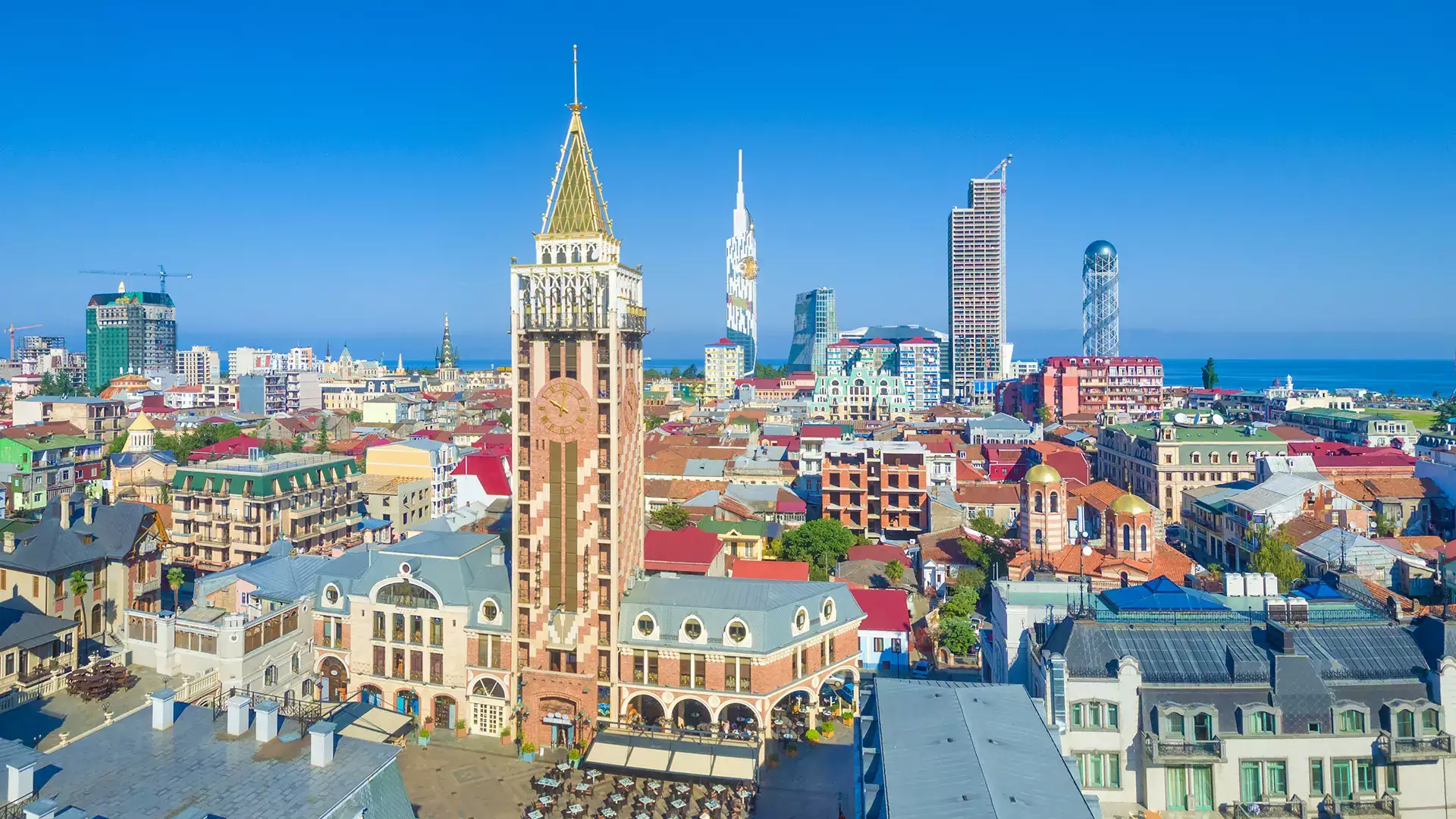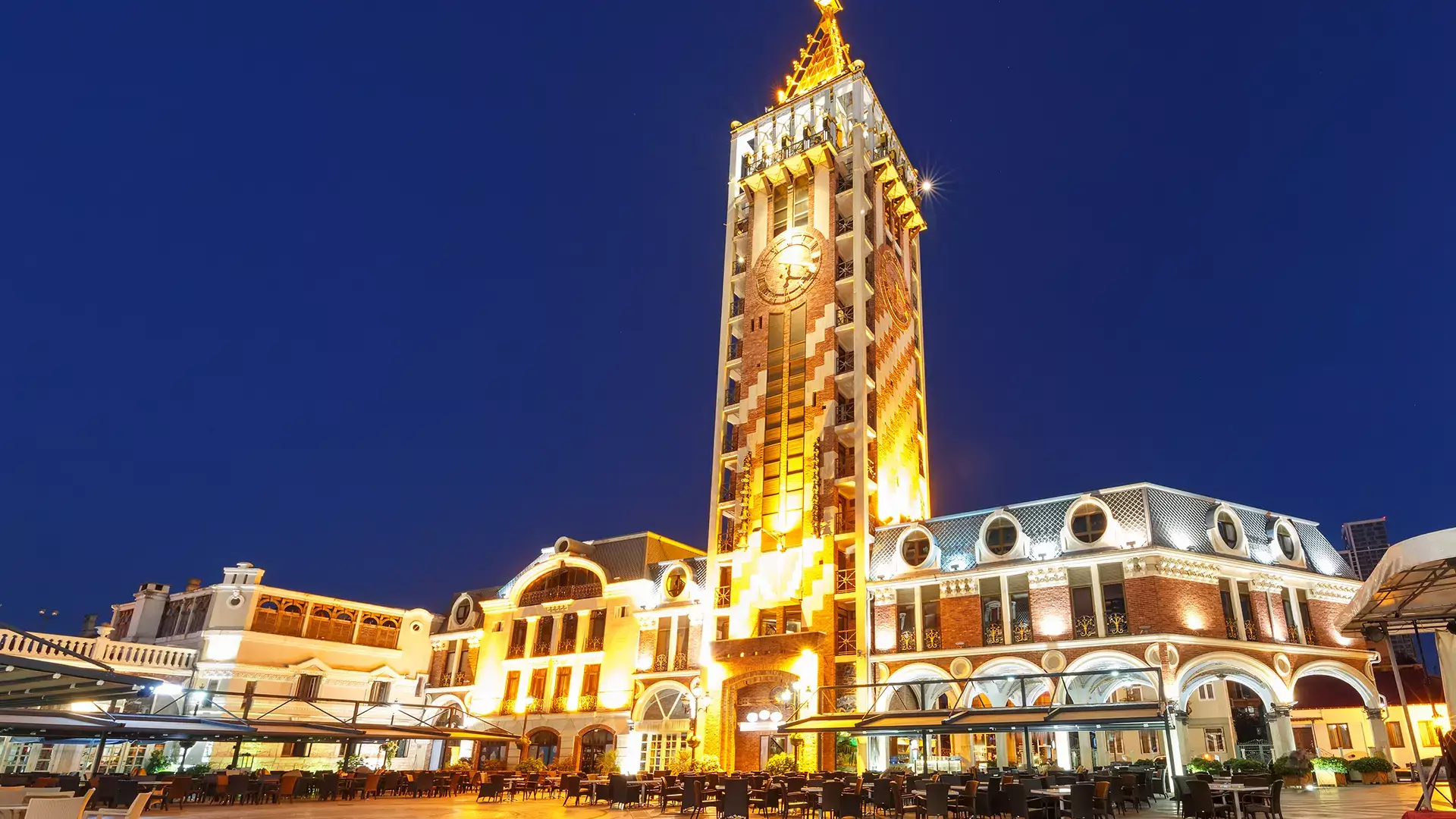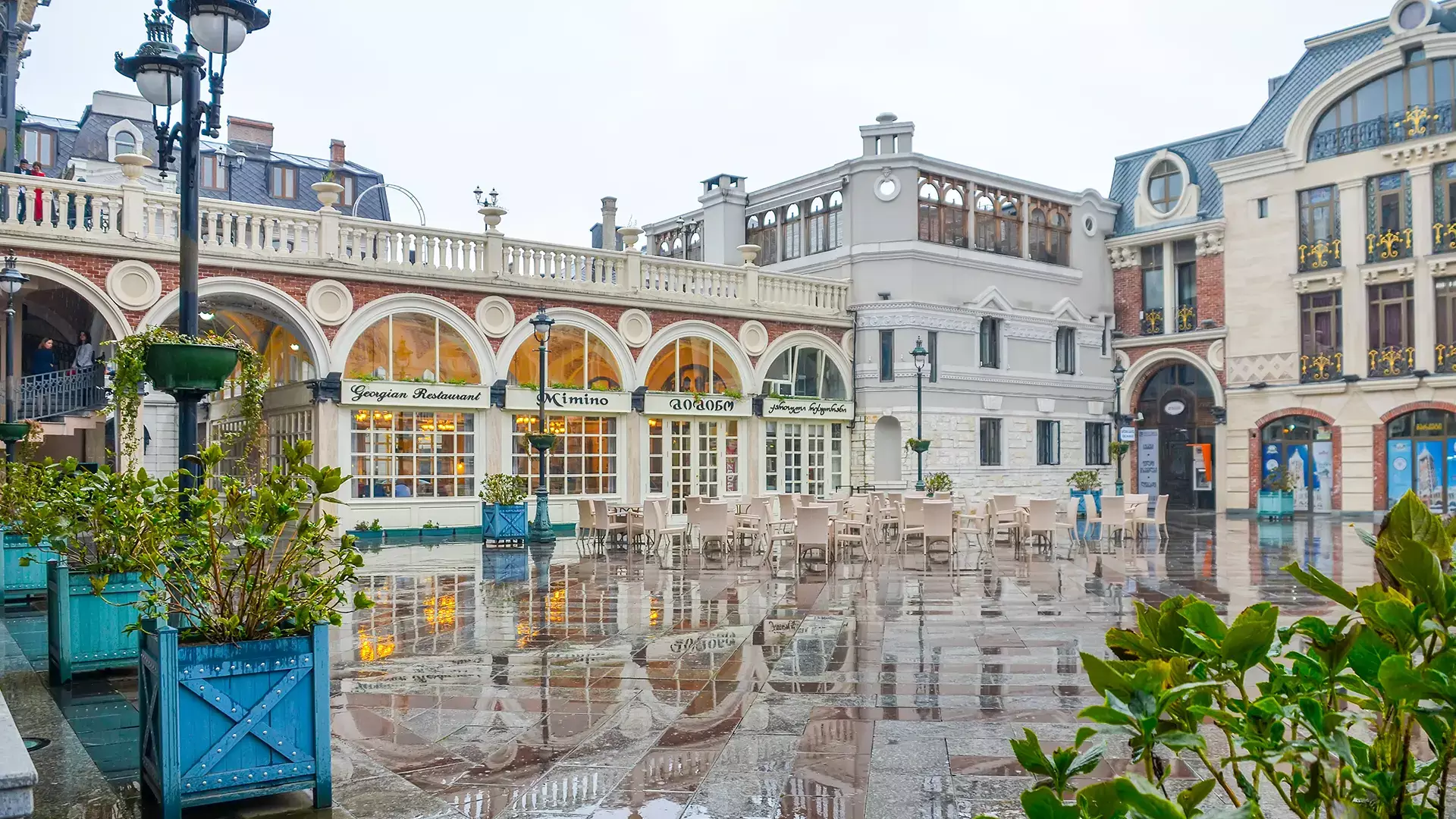Batumi Piazza
Where is Batumi Piazza Located?
Batumi Piazza is located right in the heart of the city. It covers 5,700 square meters and is, in fact, a complex architectural project rather than another square. Most of the buildings surrounding the piazza are relatively new and were built in 2009, based on the designs of Georgian architect Vazha Orbeladze. He intended the new buildings to slot seamlessly into one of Batumi’s most historic districts.
Ultimately, the complex creates the illusion that you are in a small Italian town. The main architectural focal point here is the clock tower, which attracts attention due to its height and ornamentation. This tower now houses a tasteful boutique hotel. It melds together elements from traditional Georgian and classical European architecture, as well as decorative Eastern-style motifs.
Set apart from the main buildings, at the center of the piazza itself, the ground below you is decorated by a grand mosaic, perhaps the most recognizable element of the area. So much so that Batumi Piazza is often used to refer to the mosaic specifically, rather than the entire square.
The area is well known for its variety of entertainment and shopping venues. Sunday markets are frequently held at the piazza, where local artists and artisans sell their works. During peak season, stalls featuring artisanal products operate on the square daily.
Batumi Piazza Mosaic
Batumi Piazza is home to Europe’s largest figurative marble mosaic. It was created in 2010 by Georgian-Swiss designer Natalie (Natalia) de Pita-Amirejibi and covers 106 square meters.
According to de Pita-Amirejibi, the concept combines the eternal motion of the sea with the continuous development of a modern urban space. The composition consists of eight concentric circles of varying diameters. In the central part, there are five female figures representing sea deities, each dressed in a different color (red, blue, purple, pink, and green) emphasizing their distinct characters. The central figure of the composition — a small mermaid — is modeled on the designer’s daughter, Romina.
Its tiles were manufactured in Abu Dhabi at the “Fantini Mosaici” workshop, and then transported to Batumi and assembled on-site, with de Pita-Amirejibi personally supervising the assembly process.
Notably, the assembly was completed in just 10 days. For a mosaic of this size, it’s remarkably quick: more than 88 million cut and processed tiles, each measuring 1 square centimeter, were required to create the composition. These tiles are organized into 1,764,895 separate segments, with the main material sourced from 15 different countries, and certain details, including one purple dress of one goddess and the darker section of another’s red dress, were crafted from a different ceramic material altogether.
How to Get to Batumi Piazza
Batumi Piazza is conveniently located in central Batumi, so it’s easily found from any part of the city.
It’s easily accessible by public transportation and - if you’re in the Boulevard area or another part of the city center - by foot, as well. If you prefer to use public transportation, choose any bus service that stops on Gogebashvili Street. It’s best to get off near Gogebashvili 10-12; from there, it’s less than a 5-minute walk to the piazza. However, from any part of Gogebashvili Street, including near the Argo cable car, the piazza is no more than a 10-minute walk away.
According to Batumi Transportation Company, buses 6, 8, 10, 12, and 16 pass closest to Batumi Piazza. However, keep in mind that the city’s bus routes are not yet supported by Google Maps, so before boarding, be sure to confirm directions and the nearest stop with the driver.
If you’re planning to walk to Batumi Piazza from the Boulevard, the easiest route is to follow Gogebashvili Street and then turn onto King Parnavaz Street. The full walk takes about 15 minutes. For those coming from the Cathedral side, the most convenient way is to go down Zubalashvili Street and then turn onto Mazniashvili Street.
Nearby Landmarks
Batumi Cathedral - The Holy Mother Virgin Nativity Cathedral was built between 1897 and 1902, financed by the Zubalashvili brothers, the most famous Georgian philanthropists of the era. The three-domed cathedral was built in a neo-Gothic style and is characterized by colorful stained-glass windows and tall spires — such examples of Gothic architecture are rare in Georgia. It takes about 10 minutes to walk to the Cathedral.
Adjara Art Museum - The biggest art gallery in the region has permanent museum exhibitions displaying works by some of the most prominent Georgian and foreign artists from the 19th and 20th centuries, including Niko Pirosmani, Gigo Gabashvili, and Lado Gudiashvili. In 2015, a new gallery space was added for temporary collections, where contemporary art exhibitions and educational events are regularly held. It takes 15 minutes to walk to the Adjara Art Museum from Batumi Piazza.
Adjara Khariton Akhvlediani Museum - The main museum of the Adjara region, it was founded in 1908 and today houses up to 180,000 exhibits. The museum houses unique items, collections, photographs, art, and manuscripts. Its collections also include materials reflecting Adjara’s abundant flora and fauna. Particularly noteworthy is the museum’s unique book collection, with about 6,000 pieces. Walking to the museum from Batumi Piazza requires about 10 minutes.
Batumi Miracle Park - The most recognizable location in Batumi Boulevard, where some of the city’s most iconic attractions are found, including: Ali and Nino – an 8-meters-tall moving sculpture, with male and female metal figures moving towards and through each other; Alphabet Tower, a 130-meters-tall structure surrounded by giant metal strips imitating the DNA double helix, decorated with the 33 letters of the Georgian alphabet; and a 55-meters-tall panoramic Ferris Wheel, with views on the city, mountains, and Black Sea. The wheel accommodates 240 people, and one complete rotation takes 10 minutes. Miracle Park is reachable by foot from the piazza in approximately 15 minutes.
Cookie Policy



